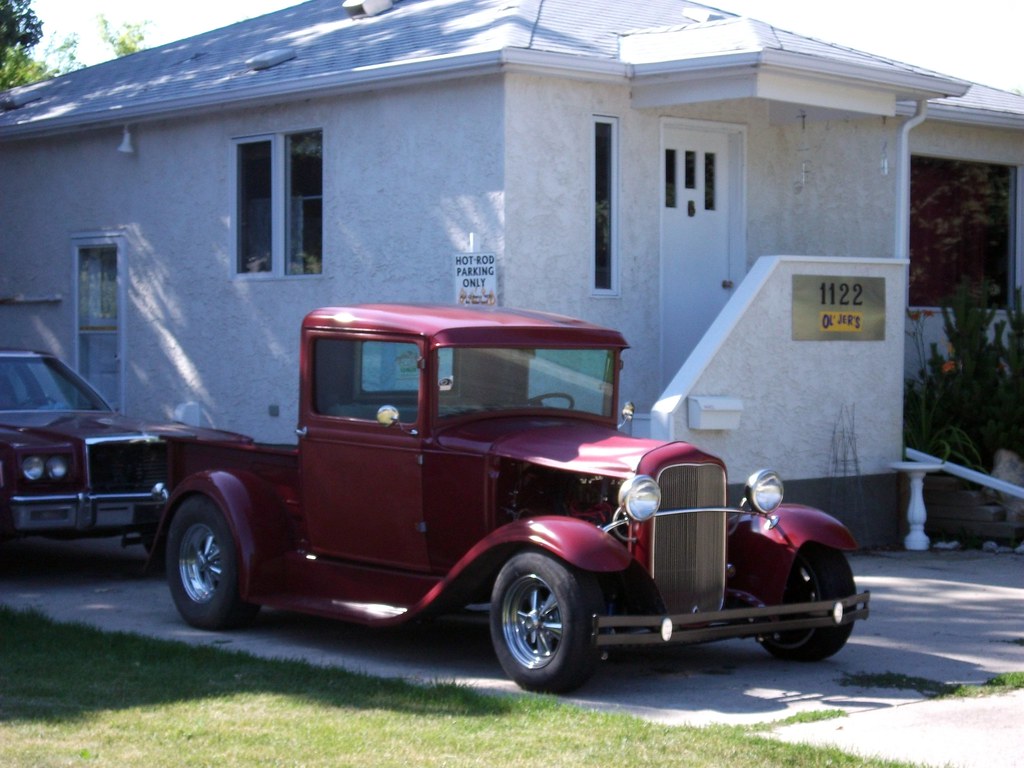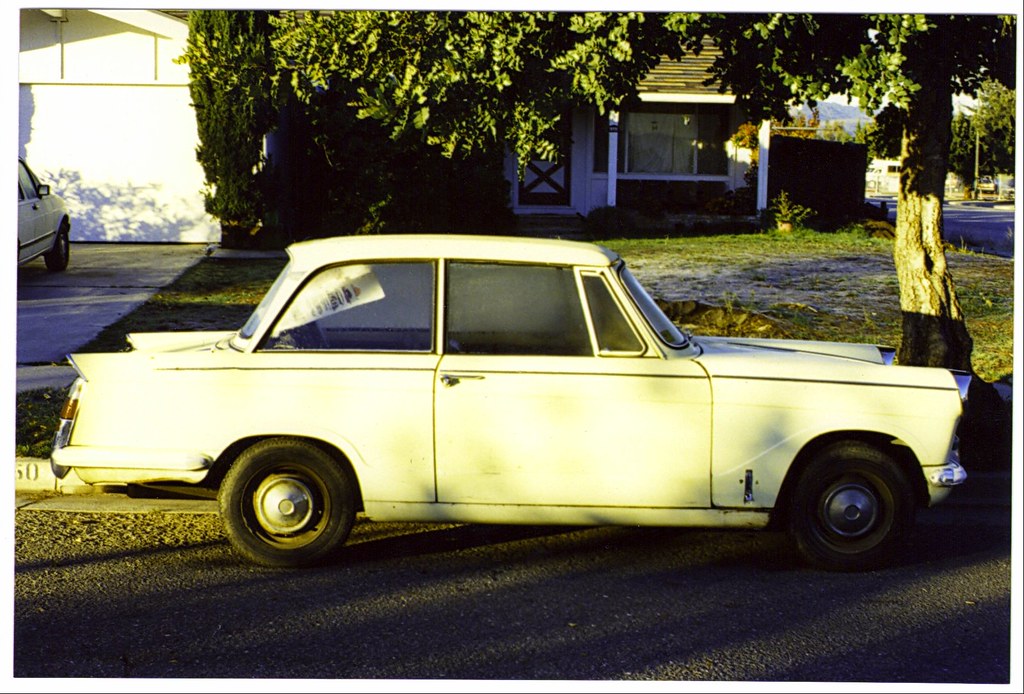
The 1960s! What a decade for cars, right? We’re talking about a time when legends like the Mustang, Camaro, and Cobra roared onto the scene, capturing hearts and headlines with their raw power and undeniable cool. But here’s the thing, sometimes the loudest voices get all the attention, and a whole universe of truly incredible, often-overlooked vehicles gets pushed to the sidelines. We’re here to change that!
Before the muscle car madness completely took over, the automotive world was also brimming with clever compacts and surprisingly stylish sedans that didn’t need a huge engine or a massive price tag to make an impact. These were the unsung heroes of daily commutes, family road trips, and city adventures, blending practicality with a surprising amount of personality. They might not have smoked tires or graced the covers of every car magazine, but they were absolutely essential to how people moved through the decade.
So, buckle up, because we’re about to take a super fun trip down memory lane. We’re digging deep into the archives to pull out some of these sorta forgotten gems from the 1960s – cars that were pivotal, unique, and totally deserve another moment in the spotlight. Get ready to rediscover the brilliance of these incredible machines, because sometimes, the quietest stories are the most fascinating. Let’s roll!

1. **Chevrolet Corvair (1960)**Chevrolet truly broke the mold with the 1960 Corvair, shaking up Detroit’s conventional wisdom with a European-inspired package and a bold rear-engine layout. This was a radical departure, built on a 108-inch wheelbase and measuring a tidy 180 inches in length. It bravely abandoned the tailfins and chrome excesses that were still dominating showrooms, signalling a fresh, forward-thinking approach that was practically unheard of for an American manufacturer at the time.
You’d immediately notice the shorter hood – a dead giveaway to the absent front engine – which created proportions unlike anything else wearing an American badge. Curved side glass and flush headlights enhanced its contemporary look, giving it a sleek, modern vibe. The unibody construction also played a key role, keeping the car’s weight to a manageable 2,400 pounds, which contributed to its nimble feel. When you parked your Corvair next to conventional American sedans of the era, the contrast couldn’t have been more striking – it was physical proof that Detroit could indeed create forward-thinking designs when properly motivated by European competition.
Slip behind the wheel of a Corvair, and you’d instantly appreciate its most distinctive interior feature: a completely flat floor, unmarred by the transmission tunnel that invaded passenger space in virtually every other American car. The dashboard was a marvel of aircraft-inspired gauges, positioned perfectly to be read at a glance, especially handy during spirited driving along winding roads. Monza models took the experience up a notch, pampering occupants with bucket seats that truly hugged your sides during cornering – a genuinely sporty touch when most domestic cars were still stuck with bench seats. Fresh air ventilation, cleverly pulled from the front, did an excellent job of minimizing engine heat infiltration, a common nuisance in many rear-engine designs. While later criticisms would surface regarding its handling, the Corvair’s thoughtful interior design clearly revealed GM’s impressive capacity for innovation when freed from the constraints of traditional design philosophies – a lesson the company, ironically, would repeatedly forget and relearn through the subsequent decades.
Car Model Information: 1968 Chevrolet Corvair Monza 900
Caption: 1964 Chevrolet Corvair Monza
Name: Chevrolet Corvair
Manufacturer: Chevrolet
Production: July 1959
Platform: GM Z platform
Chassis: Unibody
ModelYears: 1960–1969
Assembly: United States,Kansas City, Missouri,Oakland, California,Van Nuys,St. Louis,Flint, Michigan,Belgium,Canada,Mexico,South Africa,Switzerland,Venezuela
Class: Compact car
Successor: Chevrolet Vega
Layout: Rear-engine, rear-wheel-drive layout
Categories: All Wikipedia articles written in American English, All articles lacking in-text citations, All articles needing additional references, All articles with dead external links, All articles with specifically marked weasel-worded phrases
Summary: The Chevrolet Corvair is a rear-engined, air-cooled compact car manufactured and marketed by Chevrolet over two generations from the 1960 through 1969 model years. The Corvair was a response to the increasing popularity of small, fuel-efficient automobiles, particularly the imported Volkswagen Beetle and American-built compacts like the Rambler American and Studebaker Lark.
The first generation (1960–1964) was offered in four-door sedan, two-door coupe, convertible, and four-door station wagon configurations. A two- and four-door hardtop, as well as a convertible, were available as second-generation variants (1965–1969). The Corvair platform was also offered as a subseries known as the Corvair 95 (1961–1965), which consisted of a passenger van, commercial van, and pickup truck variant. Total production was approximately 1.8 million vehicles from 1960 until 1969.
The name “Corvair” was first applied in 1954 to a Corvette-based concept with a hardtop fastback-styled roof, part of the Motorama traveling exhibition. When applied to the production models, the “air” part referenced the engine’s cooling system.
A prominent aspect of the Corvair’s legacy derives from controversy surrounding the handling of early models equipped with rear swing axles, articulated aggressively by Ralph Nader’s Unsafe at Any Speed but tempered by a 1972 Texas A&M University safety commission report for the National Highway Traffic Safety Administration (NHTSA) which found that the 1960–1963 Corvair possessed no greater potential for loss of control in extreme situations than contemporary compacts.
To better counter popular inexpensive subcompact competitors, notably the Beetle and Japanese imports such as the Datsun 510, GM replaced the Corvair with the more conventional Chevrolet Vega in 1970.
Get more information about: Chevrolet Corvair
Buying a high-performing used car >>>
Brand: Chevrolet Model: Corvair
Price: $14,750 Mileage: 0 mi.
Read more about: Buyer Beware: Unmasking 12 Vehicles Plagued by Early Mechanical Woes and Reliability Nightmares
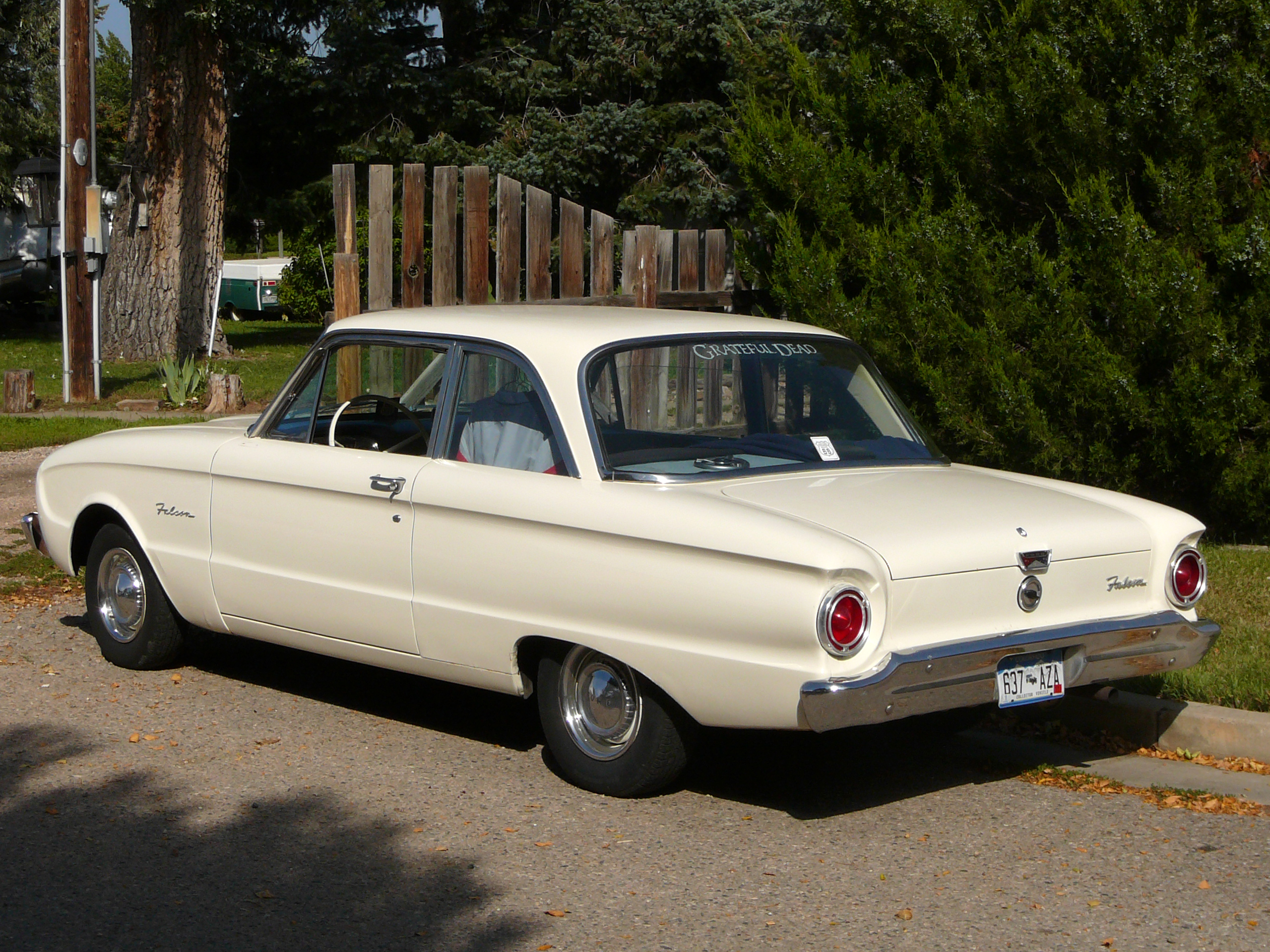
2. **Ford Falcon (1960)**Ford’s 1960 Falcon arrived on the scene as a true answer to what practical Americans were looking for, delivering sensible dimensions in a package that was conventional yet utterly approachable. With a 109.5-inch wheelbase and an 181-inch length, it hit that sweet spot, balancing maneuverability with a surprising amount of roominess. Its featherlight 2,300-pound construction was a game-changer, paying huge dividends at the gas pump – a serious perk for value-conscious buyers.
Drivers absolutely appreciated the superb visibility offered by its large greenhouse areas, featuring pencil-thin pillars. Imagine not needing today’s electronic parking aids because you could actually see where you were going! The car’s crisp, uncluttered body intentionally avoided styling gimmicks, presenting just enough horizontal grille work and modest chrome trim to look perfectly appropriate in any suburban driveway. While many competitors were busy chasing fleeting trends with flamboyant designs, the Falcon’s straightforward honesty struck a deep chord with buyers, effectively creating the template that would eventually give birth to the iconic Mustang and, in turn, reshape American car culture for decades to come.
Settle into a Falcon, and you’d immediately find a cabin that championed clarity and function, without a single unnecessary flourish. The dashboard was a masterclass in clean design, presenting all controls exactly where you’d expect them, making for an intuitive driving experience. The three-spoke steering wheel provided an unobstructed view of the straightforward gauges, ensuring vital information was always at a glance. Both front and rear benches made family trips comfortable enough, even if you wouldn’t mistake them for your living room furniture. The durable vinyl upholstery, available in various colors, was built to shrug off the daily abuse from active families and the general wear and tear of life without complaint. The airy greenhouse eliminated that closed-in feeling often associated with compacts, making the interior feel much larger despite its reasonable external dimensions. While Detroit’s marketing departments were constantly pushing planned obsolescence and annual style changes, the Falcon’s unpretentious interior represented a refreshing honesty – a crucial lesson in giving customers substance over sizzle, a philosophy that continues to separate truly successful car designs from those that quickly fade into obscurity.
Car Model Information: 1963 Ford Falcon Coupe
Categories: All set index articles, Articles with short description, Ford vehicles, Set index articles on cars, Short description is different from Wikidata
Summary: The Ford Falcon is an automobile nameplate by Ford that applied to several vehicles worldwide.
Ford Falcon (Australia), a car manufactured by Ford Australia from 1960 to 2016
Ford Falcon (North America), an automobile produced by Ford from 1960 to 1970
Ford Falcon (Argentina), a car built by Ford Argentina from 1962 until 1991
Ford Falcon van, a passenger variant of the first generation Ford E Series van (based on the Falcon platform) produced by Ford in the 1960s.
Get more information about: Ford Falcon
Buying a high-performing used car >>>
Brand: Ford Model: Falcon
Price: $24,508 Mileage: 8,269 mi.
Read more about: The Unsung Masterpieces: Exploring Iconic Films That Shockingly Missed the Best Picture Oscar

3. **Plymouth Valiant (1960)**Plymouth’s 1960 Valiant truly injected a much-needed dose of personality into the compact segment, all built on its 106.5-inch wheelbase and 184-inch length. Unlike the more conservative offerings from Ford and Chevrolet, the Valiant dared to be different, proudly showcasing an asymmetrical hood stamping and concave grille work that practically demanded a second glance. It wasn’t just another car; it was a statement.
Its bold rear fender lines swept dramatically from the doors all the way to the trunk, creating what Chrysler marketers cleverly called “stabilizer fins” – a fancy term for a genuinely unique and eye-catching profile. The front fenders stretched out beyond the headlights into distinctive cat’s-eye housings, a design cue you simply couldn’t mistake for anything else on the road. Weighing in at a respectable 2,500 pounds, its unibody structure provided impressive rigidity without any excess mass, making it feel solid and well-built. When you parked your Valiant at the local drive-in, its unconventional styling made an undeniable statement that mainstream compacts just couldn’t match – clear proof that practical transportation absolutely didn’t have to be visually forgettable.
The Valiant’s cabin masterfully balanced daily practicality with those delightful touches of Chrysler’s distinctive design flair. You couldn’t talk about the interior without immediately mentioning the push-button automatic transmission selector – it was an absolute conversation piece that never failed to delight passengers unfamiliar with this iconic Chrysler hallmark. Essential gauges were neatly clustered in a driver-facing pod, communicating all vital information without any distraction, while the bench seats offered reasonable space in both the front and rear rows. The vinyl upholstery, available in a variety of colors, perfectly reflected the more adventurous palette choices of the early 1960s, all without requiring any special care. The generous greenhouse design effectively eliminated blind spots, something that would undoubtedly concern today’s drivers who are accustomed to backup cameras and sensors. While competitors often played it safe with conventional designs, the Valiant’s truly distinctive character found enough buyers to unequivocally prove that Americans could indeed appreciate quirky design when it was perfectly paired with solid engineering – a winning formula that still distinguishes memorable cars from mere automotive wallpaper.
Car Model Information: 1967 Plymouth Valiant
Name: Plymouth Valiant
Caption: 1969 Plymouth Valiant Signet 2-door sedan
Manufacturer: Plymouth (automobile)
Production: 1959–1976
Class: Compact car
Platform: Chrysler A platform
Layout: FR layout
Successor: Plymouth Volaré
Categories: 1970s cars, 1976 disestablishments, All articles with unsourced statements, Articles with short description, Articles with unsourced statements from August 2019
Summary: The Plymouth Valiant (first appearing in 1959 as simply the Valiant) is an automobile which was marketed by the Plymouth division of the Chrysler Corporation in the United States from the model years of 1960 through 1976. It was created to give the company an entry in the compact car market emerging in the late 1950s and became well known for its excellent durability and reliability. It was one of Chrysler’s best-selling automobiles during the 1960s and 1970s helping to keep the company solvent during an economic downturn. Road & Track magazine considered the Valiant to be “one of the best all-around domestic cars”.
The Valiant was also built and marketed, with or without the Plymouth brand, worldwide in countries including Argentina, Australia, Brazil, Canada, Finland, Mexico, New Zealand, South Africa, Sweden, and Switzerland, as well as other countries in South America and Western Europe. Its compact size, by American standards, allowed it to be sold as a large car in Europe and elsewhere, without being too large for local conditions.
Get more information about: Plymouth Valiant
Buying a high-performing used car >>>
Brand: Plymouth Model: Valiant
Price: $37,900 Mileage: 23,456 mi.
Read more about: Lost Wonders of the Chrome Age: 14 Vanished ’60s Concept Cars That Defined Automotive Dreams

4. **Dodge Dart (1963)**The 1963 Dodge Dart made quite an entrance with its crisp, balanced styling that achieved a perfect harmony between distinction and broad appeal. Built on a generous 111-inch wheelbase and stretching 196 inches in length, it wisely moved away from the more polarizing designs of earlier Dodge compacts, instead finding that sweet spot between conventional good looks and undeniable character. It was a refreshing design that resonated with a wider audience.
Sharp body creases created a clear definition along the flanks, connecting the front to the rear with purposeful lines that caught sunlight dramatically, giving the car a dynamic presence. Quad headlights flanked a concave grille, featuring just enough visual interest to stand out in crowded parking lots without ever looking dated or overdone. At approximately 2,700 pounds, its unibody structure delivered excellent rigidity without any unnecessary heft, contributing to a solid, reassuring feel on the road. When you pulled up beside the full-size models of the era, the Dart looked perfectly proportioned rather than compromised – a truly “right-sized” approach that drew in buyers who wanted something substantial, but without the excess dimensions and fuel thirst typically associated with American sedans.
Step inside a Dart, and you’d quickly understand why Chrysler’s compacts developed such a loyal following. The thoughtfully designed instrument panel positioned gauges within a concave housing directly ahead of the driver, ensuring perfect visibility without requiring your eyes to stray far from the road. Contrasting upholstery options, available in vinyl or cloth, added a welcome visual warmth in an era when many economy car interiors often resembled rather spartan penalty boxes. Rear passengers, in particular, genuinely appreciated the generous legroom, a feature that smaller compacts simply couldn’t provide, which transformed the Dart into a legitimate family car rather than just basic commuter transportation. The sizeable glove compartment and convenient door pockets were perfect for swallowing all those road trip essentials without overflowing into the main cabin. While competitors often betrayed their budget roots with cheaper materials and assembly shortcuts, the Dart’s superior craftsmanship truly reflected Dodge’s slightly upmarket position – one of the many compelling reasons these practical compacts garnered such passionate owners who often kept them running decades longer than their planned obsolescence should ever have allowed.
Car Model Information: 2015 Dodge Dart SXT
Name: Dodge Dart
Caption: 1966 Dodge Dart GT 2-door hardtop
Manufacturer: Dodge
Production: 1959–1976 (US market)
ModelYears: 1960–1976 (US market)
Class: Full-size
Layout: FR layout
Predecessor: Dodge Coronet#Fourth generation (1957–1959)
Related: Plymouth Valiant,Chrysler Valiant,Dodge Phoenix
Successor: Dodge Aspen,Dodge Diplomat,Talbot Tagora
Categories: 1970s cars, All articles with unsourced statements, Articles with short description, Articles with unsourced statements from December 2023, Articles with unsourced statements from May 2025
Summary: The Dodge Dart is a line of passenger cars produced by Dodge from the 1959 to 1976 model years in North America, with production extended to later years in various other markets.
The production Dodge Dart was introduced as a lower-priced full-size model in 1960 and 1961, but became a mid-size car for one model year for 1962, and was then reduced to a compact for two generations, from 1963 to 1976.
Chrysler had first used ‘Dart’ name plates on two Italian styled show cars, in 1956 and 1957, before it became a Dodge model name. The Dart nameplate was resurrected for a Fiat-derived compact car that was introduced in 2012.
Get more information about: Dodge Dart
Buying a high-performing used car >>>
Brand: Dodge Model: Dart
Price: $9,995 Mileage: 143,082 mi.
Read more about: How Well Do You Know Classic Cars? Try Taillight Identification Quiz

5. **Mercury Comet (1960)**Mercury took the foundational bones of the Ford Falcon and cleverly stretched them to create the more upscale Comet, boasting a longer 114-inch wheelbase and a 194-inch length. This move perfectly balanced compact efficiency with a near-midsize presence, positioning the Comet as something a little more refined. Its styling incorporated subtle luxury touches, like the fine-mesh grille work and more elaborate side trim, which distinctly set it apart from its Ford cousin without ever appearing pretentious or over-the-top.
Dual headlights, elegantly nestled in chrome bezels, flanked a horizontal grille featuring Mercury’s signature “floating M” emblem – just enough flash to clearly justify its premium positioning. Those distinctive wrapped taillights provided a classy nighttime signature, a much more sophisticated touch compared to the Falcon’s simpler units. When you parked your Comet at the country club, it didn’t scream “economy car” like many other compacts of the era; instead, it subtly whispered “sensible luxury” to a growing demographic of buyers who desired prestige without the hefty fuel bills and challenging parking situations associated with full-size luxury models. It was, in many ways, the perfect compromise.
Slide behind the Comet’s wheel, and you’d immediately notice the thoughtful, upmarket appointments that so convincingly justified its premium over the more basic Falcon. The dashboard was a highlight, featuring an oval-shaped instrument cluster that neatly housed the speedometer and auxiliary gauges – a distinctive touch that truly made every drive feel a little more special than the price difference might suggest. Upholstery choices utilized higher-grade vinyl or optional cloth, often adorned with more intricate patterns that proved remarkably resistant to showing wear, even on long trips. The extended wheelbase directly translated into generous rear passenger legroom, effectively making compact car claustrophobia a distant memory. Both front and rear bench seats were designed to comfortably accommodate six passengers when necessary, though the availability of bucket seats in sportier models hinted at the personal luxury direction that Mercury would increasingly explore in the years to come. While Detroit often continued pushing ever-larger models, the Comet carved out a niche for those seeking elegant, practical transportation.
Car Model Information: 1962 Mercury Comet
Name: Mercury Comet
Aka: Comet
Caption: 1964 Mercury Comet Caliente coupé
Manufacturer: Mercury (automobile)
Production: 1960–1961 (“Comet”), 1962–1977 (“Mercury Comet”)
Assembly: Oakville, Ontario,Canada,Claycomo, Missouri,United States,Lorain, Ohio,United States,Milpitas, California,United States,Wayne, Michigan,United States
Class: Compact car
Related: Ford Fairlane (Americas),Ford Falcon (North America),Ford Maverick (North America),Ford Torino,Mercury Montego
Layout: FR layout
Successor: Mercury Zephyr,Mercury Monarch
Categories: 1960s cars, 1970s cars, All articles with unsourced statements, Articles with short description, Articles with unsourced statements from August 2019
Summary: The Mercury Comet is an automobile that was produced by Mercury from 1962–1969 and 1971–1977 — variously as either a compact or an intermediate car. For 1960 and 1961, Comet was its own brand sold by Lincoln-Mercury “Comet”.
The compact Comet shared a naming convention associated with the ongoing Space Race of the early 1960s with the Mercury Meteor, which was introduced as the base-trim full-size Mercury sedan.
The Comet was initially based on the compact Ford Falcon, then on the intermediate Ford Fairlane, and finally on the compact Ford Maverick. Early Comets received better-grade interior trim than concurrent Falcons, and a slightly longer wheelbase.
Get more information about: Mercury Comet
Buying a high-performing used car >>>
Brand: Mercury Model: Comet
Price: $17,500 Mileage: 66,783 mi.
Read more about: 15 Cars From the 1960s That History Would Rather Forget
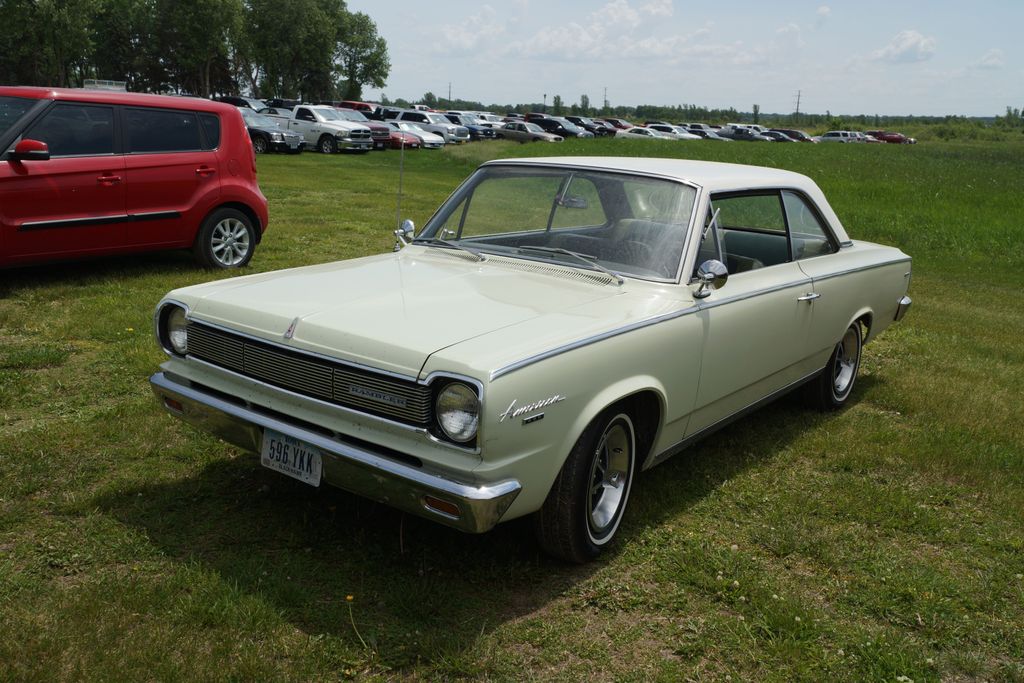
6. **Rambler American 440**The Rambler American 440 truly found its place in the bustling 1960s with a quiet confidence, characterized by its clean lines, modest size, and everyday comfort. It offered just enough style to gracefully stand out from the crowd without ever attempting to compete with the flashier, more extravagant options of the era. This car was all about understated elegance and reliable performance, appealing to those who valued substance over showmanship.
Inside, the cabin was a masterclass in usability, focusing on straightforward controls and excellent visibility, making for an incredibly driver-friendly experience. Families particularly appreciated the smooth ride and reliable handling, which made both short errands and longer journeys a pleasure. The car’s well-thought-out proportions made it remarkably easy to park, a huge advantage in increasingly crowded urban environments, and its inherent simplicity kept ownership stress refreshingly low. While it hailed from a smaller company, the Rambler American 440 carried a sense of confidence and integrity that larger, more established names couldn’t always match, proving that quality and thoughtful design weren’t exclusive to the automotive giants.
The 440 trim, in particular, brought a little extra flair to the Rambler without pushing too far into ostentation. It was a subtle upgrade that enhanced its appeal without compromising its core values of practicality and comfort. Over time, as the brand shifted direction, the Rambler American 440 quietly faded from the main stage, becoming one of those delightful forgotten gems. Today, it still makes appearances at car shows, often commanding a calm presence that turns heads out of sheer curiosity and admiration. For those who genuinely appreciate clean, unpretentious design and a subtle charm that speaks volumes, this compact absolutely deserves another thoughtful look. It’s a testament to the idea that some of the best things in life are indeed the simplest.
Car Model Information: 2024 Mazda CX-5 2.5 S Carbon Edition
Name: Rambler American
Caption: Second generation: 1962 convertible
Manufacturer: American Motors Corporation
Production: 1958–1969
Assembly: Kenosha, Wisconsin,Brampton, Ontario,Tehran,Mexico City,Pretoria,Port Melbourne, Victoria
Layout: FR layout
Platform: AMC’s “junior cars”
Predecessor: Nash Rambler,Nash Metropolitan
Successor: AMC Hornet
Class: Compact car
Categories: 1960s cars, AMC vehicles, All articles with unsourced statements, Articles with short description, Articles with unsourced statements from August 2025
Summary: The Rambler American is a compact car produced by American Motors Corporation (AMC) from 1958 until 1969. Representing the second incarnation of the influential compact Rambler lineage that originated with AMC’s forerunner, Nash Motors, in 1950. This version continued to be marketed under the Nash and Hudson marques during the 1954 and 1955 model years following the merger of the two automakers in 1954.
The Rambler American spanned three generations: 1958–1960, 1961–1963, and 1964–1969. Its final model year, 1969, was the last automobile to carry the historic Rambler name in the U.S. and Canadian markets. The Rambler American was also marketed or assembled under license in Australia, Iran, Mexico, Argentina, and South Africa. The Rambler American was available in right-hand drive versions. AMC also shipped CKD units to be assembled in other countries.
The compact Rambler American was among the lowest-priced cars built in the U.S., earning popularity for its low cost of ownership. Numerous victories in the Mobil Economy Run competitions validated this reputation. While initially lauded for its practicality, the American’s image expanded with the optional second-generation AMC V8 engine in late 1966. This transformation made them compact “muscle” models, culminating in the 390 cu in (6.4 L) version developed with Hurst Performance, marketed as the “SC/Rambler”.
The Rambler American platform also served as the foundation for other designs. A youth-oriented concept car, the 1964 Rambler Tarpon, showcased a fastback design that foreshadowed the styling of the 1965 Rambler Marlin. The platform transitioned to sporty pony cars with the 1968 AMC Javelin. It was further reconfigured for its replacement model, the 1970 AMC Hornet. The Rambler American exemplifies AMC’s strategic agility, blending economy, innovation, and performance.
Get more information about: Rambler American
Buying a high-performing used car >>>
Brand: Rambler Model: American 440
Price: $25,958 Mileage: 26,006 mi.
Read more about: Buyer’s Remorse: 12 Highly Flawed Collector Cars That Mechanics Refuse to Touch
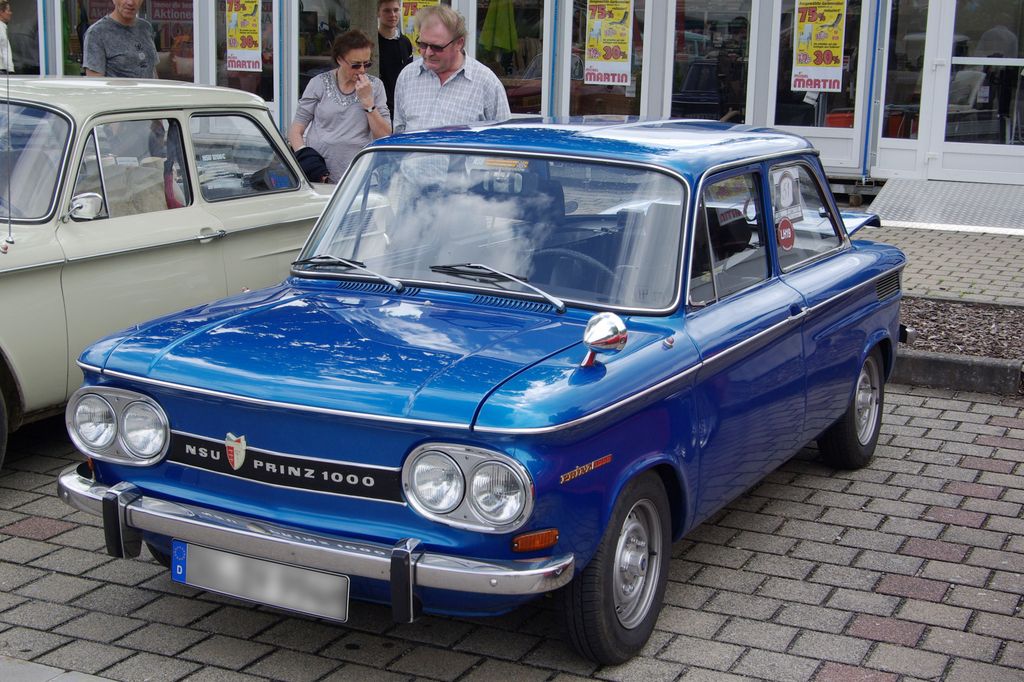
7. **NSU Prinz 1000**Alright, buckle up, because our next forgotten gem, the NSU Prinz 1000, is a true character! This little marvel rolled in from Germany, bringing with it a completely different perspective on what a compact car could be. It was, without a doubt, compact, quirky, and absolutely unmistakable on the road. Its design truly leaned into utility, proving that practicality could indeed have its own unique charm.
What really made the Prinz 1000 stand out was its clever engineering, including that distinctive rear-mounted engine and those sharp, purposeful proportions that just oozed personality. You see, this wasn’t some boring econobox; it was a car that genuinely had a voice of its own! It was perfectly at home zipping through the tightest of spaces with impressive ease and always managed to hold its own in busy traffic, never missing a beat.
Step inside this German charmer, and you’d find an interior that was wonderfully minimal, yet still offered just enough comfort for two adults, with a convenient spot for the occasional back-seat guest. Those beautifully rounded body panels and its charmingly short nose created a unique silhouette that, even today, still has that special knack for drawing glances and sparking conversations. It might not have been a flashy showstopper, but it delivered a specific, super-smart kind of efficiency that was just what European cities needed.
And here’s a fun fact: American drivers who were lucky enough to discover this little car often remembered it fondly, holding onto those memories long after they’d moved on to other rides. Seriously, it’s pretty rare to find another compact from that incredible era that managed to pack so much personality into such a small frame. The Prinz 1000 was a masterclass in blending precision with delightful simplicity, a true testament to the idea that fantastic things really do come in small, quirky packages! It reminds us that thoughtful engineering can make a huge impact, even in the quietest of ways.
Read more about: An Unforgettable Time: Iconic Comedians & A Hollywood Legend Depart, Marking the Quiet of a Comedic Force
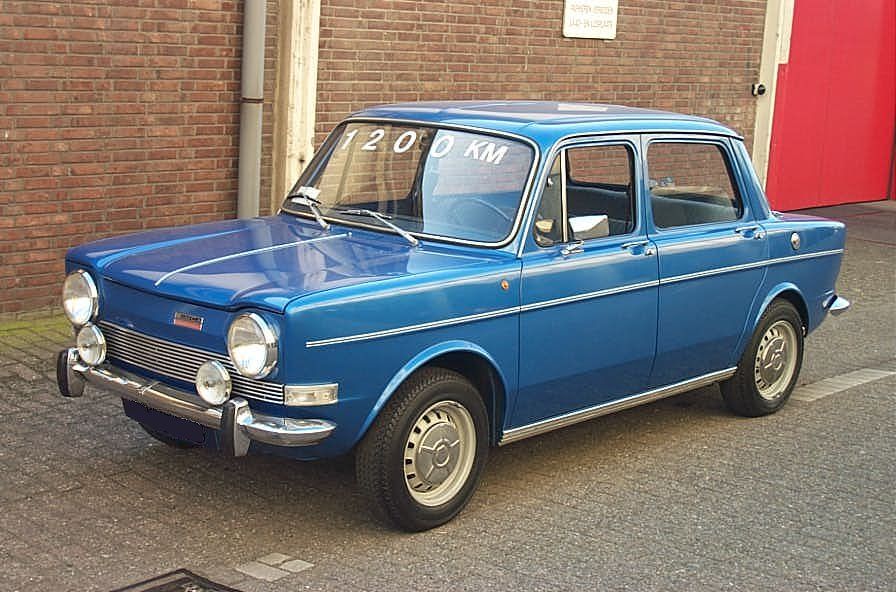
8. **Simca 1000**Next up, we’re heading to France for another compact hero, the Simca 1000! This car was practically built for navigating those narrow European streets and tackling unpredictable daily commutes with absolute flair. It effortlessly aimed to blend classic European sensibility with all the convenience you’d need for everyday driving, proving that style and substance could absolutely go hand-in-hand in a smaller package.
Don’t let its size fool you; the Simca 1000 was surprisingly spacious, comfortably carrying four passengers without ever feeling heavy or oversized. Its incredibly clever layout made the absolute most of its limited space, allowing the wheels to truly hug the corners, which kept the handling wonderfully sharp and responsive. The car’s distinctively boxy body gave it a practical edge that was much appreciated, while those subtle details ensured it remained visually interesting, rather than just blend into the background.
It’s no secret that French manufacturers often loved to play by their own rules when it came to car design, and Simca really leaned into that wonderfully unique idea with the 1000. The result? A car that was incredibly versatile, seamlessly serving as a reliable commuter, a practical family hauler, and even an ideal, budget-friendly first purchase for many. Owners absolutely adored how easy it was to maintain, especially for those living with small garages or navigating tight urban blocks where space was a premium.
While it might have quietly disappeared from most roads over the years, fading gently into the annals of automotive history, the Simca 1000 definitely left its mark. For a good while, it brought a fantastic sense of precision and a whole lot of personality to daily driving, showing the world that even a practical car could have genuine charm and a unique story to tell. It was a testament to smart European design, proving that you don’t need a huge footprint to make a lasting impression.
Read more about: Hidden Gems of the Highway: Revisiting 12 Forgotten Compact Cars of the 1960s
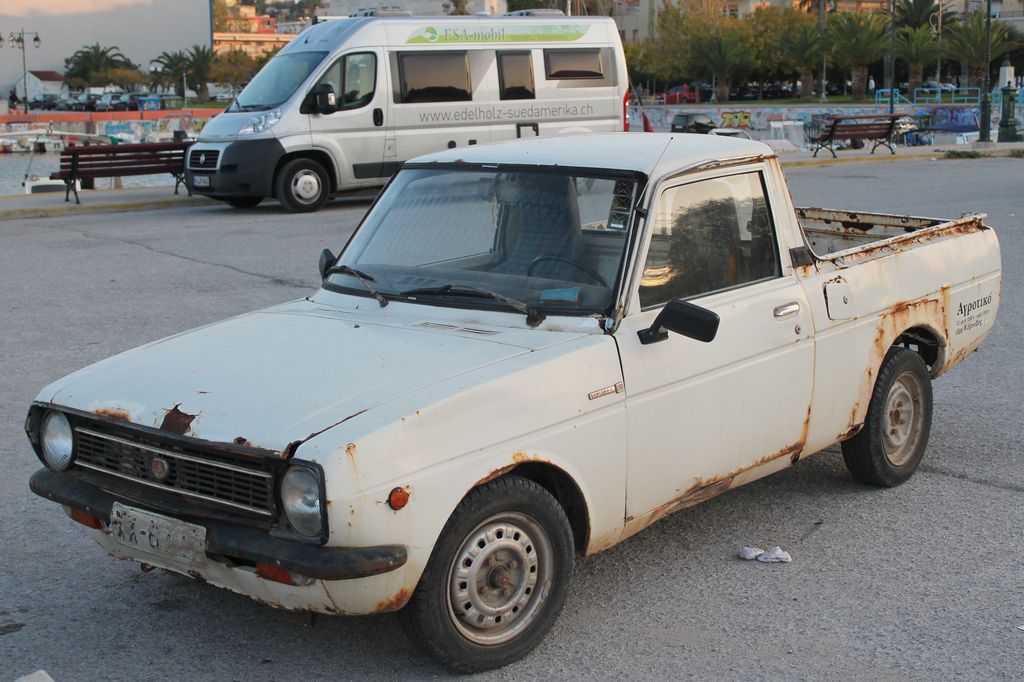
9. **Toyota Publica**Before Toyota became the global automotive powerhouse we know and love today, they were experimenting with some truly interesting cars, and one of those fascinating early efforts was the Toyota Publica! This compact and clever vehicle set out with a clear goal: to be affordable and incredibly efficient, all without ever feeling bare-bones or lacking in quality. It was a thoughtful approach to car design that laid critical groundwork for what was to come.
The Publica’s design was always neat and incredibly well-thought-out, featuring a harmonious blend of square panels and soft, inviting curves that worked beautifully together. It managed to look purposeful and modern without any unnecessary fuss. Inside, the designers kept the layout brilliantly simple and highly functional, offering just enough room for small families or solo commuters to travel comfortably and without complaint.
While the Publica enjoyed a strong and well-deserved presence on Japanese streets during its time, it’s fair to say that few people outside of that region remember it vividly today. However, its importance in Toyota’s story cannot be overstated! This humble compact was absolutely crucial in shaping Toyota’s long-term strategy, powerfully proving that small cars could, indeed, build incredible customer loyalty over time.
With its wonderfully light controls and calm, composed behavior on the road, the Publica was perfectly suited for a generation of drivers who truly valued economy and straightforward reliability above all else. Enthusiasts today still admire just how focused and purposeful it felt behind the wheel, a testament to its intelligent engineering. This early effort, though ‘sorta forgotten,’ truly deserves immense credit for helping to kickstart something much, much bigger for Toyota, laying the foundation for global success one small, efficient car at a time.
Read more about: The Gold Standard vs. The Graveyard: A Deep Dive into 10 Used Crossovers Dealers Love (and Loathe)
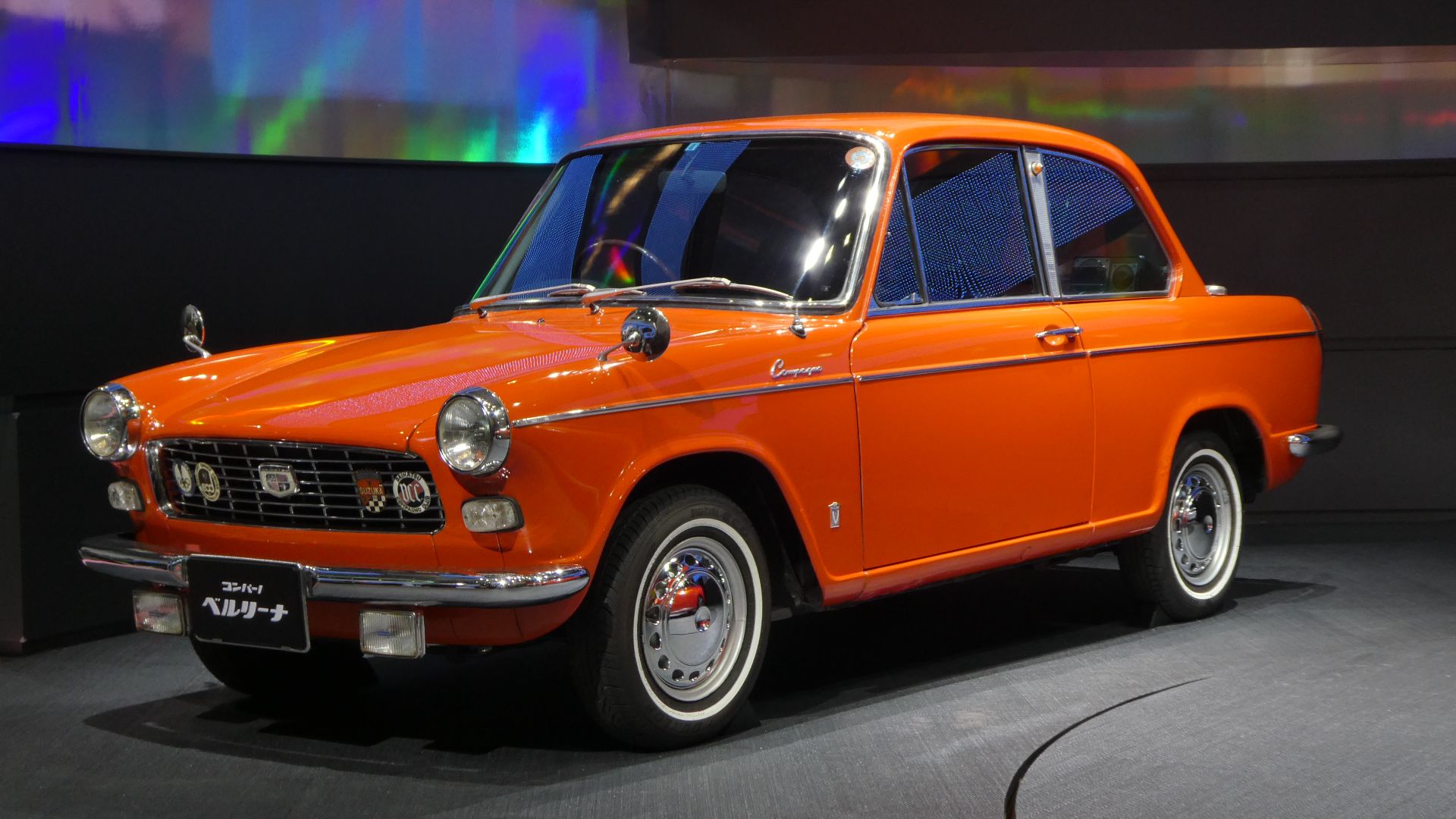
10. **Daihatsu Compagno Berlina**Alright, let’s keep our journey rolling with another fantastic international entry: the Daihatsu Compagno Berlina! This car, with its distinct lines and wonderfully compact styling, truly managed to stand apart from many other small cars vying for attention in the swinging 1960s. It beautifully carried a gentle mix of charm and solid practicality, all wrapped up in a package that somehow felt remarkably upscale for its modest size.
Take a good look at its exterior, and you’d immediately notice that upright profile, those elegant slim pillars, and just enough gleaming chrome accents to give it a look that suggested genuine elegance without ever reaching for outright luxury. It was a masterclass in understated class! Inside, the seating was designed to be supportive and comfortably upright, making it absolutely perfect for quick short trips around town or those everyday city drives.
The Compagno Berlina wasn’t just a pretty face; it also marked Daihatsu’s ambitious attempt to expand its influence far beyond its home shores and truly embrace the global automotive market. While a few of these delightful cars did find their way into markets beyond Japan, unfortunately, like many gems of the era, many quietly disappeared with the passage of time, becoming truly forgotten in the mainstream.
But for those who knew it, the Compagno Berlina offered quiet manners and incredibly tidy handling, which gave it a distinct edge, especially in increasingly crowded urban spaces. It was an easy car to enjoy, though perhaps, sadly, even easier for history to overlook. Today, this charming compact remains a small but incredibly proud piece of automotive history, a testament to thoughtful design and global ambition from a brand that understood the power of a well-executed small car.
Car Model Information: 2024 Mazda CX-5 2.5 S Carbon Edition
Name: Daihatsu Compagno
Caption: 1965 Daihatsu Compagno Spider
Manufacturer: Daihatsu
Production: 1963–1970
Assembly: Ikeda, Osaka
Class: compact (car)
BodyStyle: ubl
Layout: Front-engine, rear-wheel-drive layout
Engine: ubl
Transmission: ubl
Wheelbase: ubl
Length: cvt
Width: cvt
Height: cvt
Weight: cvt
Successor: Daihatsu Consorte
Designer: Vignale
Categories: Articles with short description, CS1 German-language sources (de), Cars discontinued in 1970, Cars introduced in 1963, Commons category link is on Wikidata
Summary: The Daihatsu Compagno is an automobile which was produced by Daihatsu in Japan from 1963 to 1970. The name comes from the Italian word for “partner.” The Compagno was designed to be offered in multiple bodystyles, and was introduced prior to the acquisition of Daihatsu by Toyota in 1967. The Compagno was available as a two-door sedan, four-door sedan, two-door pickup truck, a three-door delivery van and a convertible. The first Compagno prototype was shown at the 1961 Tokyo Motor Show and was of an appearance reminiscent of the Fiat 1800/2100. This was not a very well balanced design and Vignale’s production version ended up looking quite different. The Compagno used a ladder-type chassis instead of the more modern monocoque style, with torsion bar wishbone suspension at the front and semi-elliptical leaf springs for the rear axle. The Compagno is also the first Daihatsu car to use the famous “D” logo.
Get more information about: Daihatsu Compagno
Buying a high-performing used car >>>
Brand: Daihatsu Model: Compagno Berlina
Price: $25,958 Mileage: 26,006 mi.
Read more about: An Unforgettable Journey: 13 Iconic Automotive Ventures and Their Final Passages into History
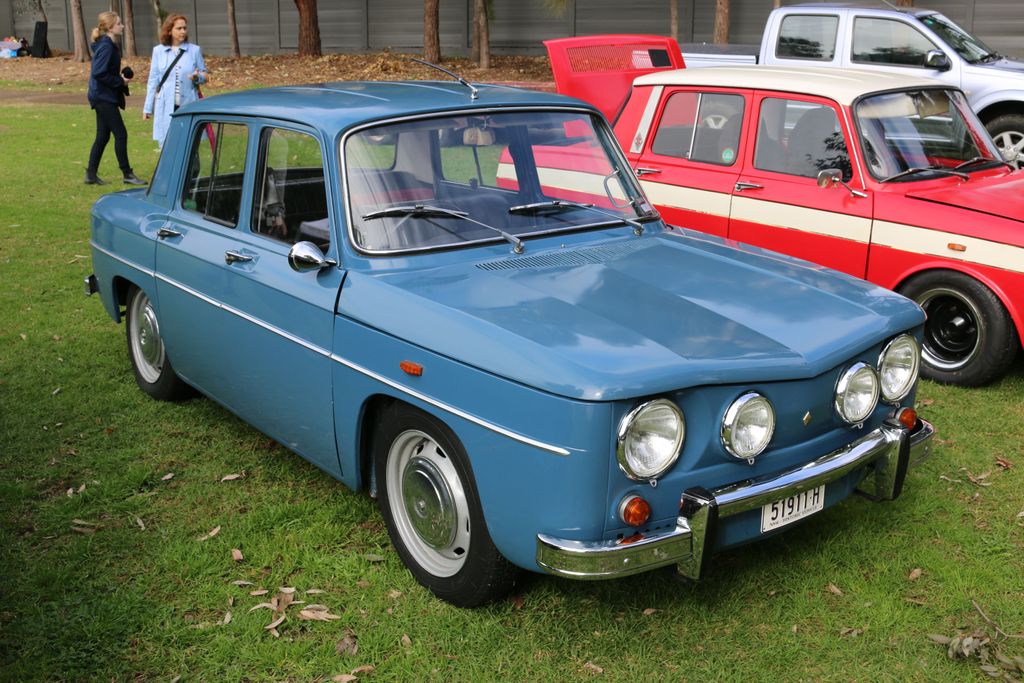
11. **Renault R8**Ready for another dose of international charm? Our next stop brings us back to France for the incredibly distinctive Renault R8, a car that masterfully mixed French flair with a powerful sense of balance and intelligent design. Those signature square lines and narrow dimensions gave it an undeniably confident stance, making it perfectly suited for navigating those tight parking spots and crowded cityscapes that defined so many European towns.
Now, while the outside of the R8 might have presented a rather conservative and unassuming appearance, trust us when we say this car delivered far more character than you might have ever expected at first glance. It was a delightful surprise! The cabin itself was a real treat, boasting generous expanses of glass and an airy, open feel that truly helped passengers enjoy every moment of the ride, making even long journeys feel less confined.
Renault, in its typical ingenious fashion, added a series of small, thoughtful touches that endowed the R8 with a truly distinct personality. From the cleverly laid-out dashboard, which was a pleasure to interact with, to the unique shape of its grille, every detail contributed to its individual charm. Owners absolutely raved about its impeccable road manners and the wonderfully relaxed pace it maintained, whether they were embarking on a long, leisurely drive or simply tackling their daily errands.
The mechanical layout of the R8 was another stroke of genius, creating fantastic balance and helping it stand out brilliantly in an increasingly crowded and competitive market. It was a testament to smart engineering that didn’t scream for attention but quietly earned respect. Many drivers, perhaps without fully realizing it at the time, passed through R8 ownership without giving it a second thought. But today, its quiet, impactful legacy absolutely deserves a moment in the spotlight, reminding us of a time when thoughtful design and subtle character made all the difference.
Read more about: Remember These? 14 Classic Cars From the 1980s That Everyone Forgot About (But Are Now Worth a Fortune!)

12. **Ford Cortina Mk1**Let’s wrap up our international tour with a true British-American collaboration, the fantastic Ford Cortina Mk1! This iconic car brought together brilliant British design sensibilities with solid American backing, creating a vehicle that was an instant hit. Its incredibly lightweight frame, crisp, clean lines, and remarkably efficient use of interior space made it an absolute favorite for families not just across the UK, but far beyond as well.
The Cortina Mk1 managed to look incredibly sharp without ever being overstyled or unnecessarily flashy, striking that perfect balance. It was a car that simply looked ‘right’ from every angle. And when it came to driving, it handled curves with a surprising amount of confidence that genuinely impressed first-time drivers, proving that practicality didn’t mean sacrificing a fun experience behind the wheel. Inside, the cabin felt wonderfully open and practical, comfortably offering seating for four adults without ever feeling cramped or claustrophobic.
One of the Cortina’s greatest strengths was its affordability; it was a car that was accessible to many, but crucially, it never *looked* cheap. This blend of value and style was a winning formula! You’d see the Cortina making appearances in high-stakes rally events and easily cruising on leisurely road trips with equal effortless ease, showcasing its incredible versatility and robust engineering. It was a car that could genuinely do it all.
This unassuming car played a pivotal role in helping Ford establish a strong and lasting foothold in the rapidly growing European market, and its influence can still be seen in many models that followed for years to come. While most people tend to remember the later versions of the Cortina, it was the Mk1 that quietly but confidently set the tone for its enduring legacy. Its superb blend of usability and inherent charm kept it incredibly relevant across a diverse range of driving needs, making it a truly unforgettable, though often overlooked, classic.
Car Model Information: 2024 Mazda CX-5 2.5 S Carbon Edition
Name: Ford Cortina
Caption: Ford Cortina Super two-door saloon (“Mark 1b”)
Manufacturer: Ford of Britain
Aka: Ford Consul Cortina
Production: ubl
Related: Ford Taunus,Ford Capri
Successor: Ford Sierra,Ford Telstar,Ford Orion
Predecessor: Ford Consul,Ford Consul Corsair
Class: Large family car
Layout: Front-engine, rear-wheel drive layout
Categories: 1960s cars, 1970s cars, 1980s cars, All Wikipedia articles written in British English, All articles with dead external links
Summary: The Ford Cortina is a medium-sized family car manufactured in various body styles from 1962 to 1982. It was the United Kingdom’s best-selling car of the 1970s.
The Cortina was produced in five generations (Mark I through to Mark V, although officially the last one was only the Cortina 80 facelift of the Mk IV) from 1962 until 1982. From 1970 onward, it was almost identical to the German-market Ford Taunus (being built on the same platform), which was originally a different car model. This was part of Ford’s attempt to unify its European operations. By 1976, when the revised Taunus was launched, the Cortina was identical. The new Taunus/Cortina used the doors and some panels from the 1970 Taunus. It was replaced in 1982 by the Ford Sierra. In Asia and Australasia, it was replaced by the Mazda 626-based Ford Telstar, though Ford New Zealand, which built the sedan until 1983 and the estate car until 1984, did import British-made complete knock-down kits of the Sierra estate for local assembly from 1984. Cortinas were also assembled in South Africa until 1984, with the pick-up version remaining in production in that country until 1987.
The name was inspired by the name of the Italian ski resort Cortina d’Ampezzo, site of the 1956 Winter Olympics. Several Cortinas were driven down the Cortina Olympic bobsled run at that resort, a publicity stunt which Ford called “Cortina Auto-Bobbing.”
Get more information about: Ford Cortina
Buying a high-performing used car >>>
Brand: Ford Model: Cortina Mk1
Price: $25,958 Mileage: 26,006 mi.
Read more about: Rewind & Reflect: 14 Vintage Car Commercials That Couldn’t Air Today
Whew! What a ride, right? Not every car needs to roar down the highway or break speed records to earn its place in history, or in our hearts. Sometimes, the real legends are the ones that simply show up, do their job incredibly well, and then, almost mysteriously, vanish before anyone truly takes full notice. These compact machines were the silent workhorses, filling streets, garages, and countless memories without ever needing to hog the headlines. They were the steady, reliable background characters in the grand adventure of life, quietly offering sensible solutions in a world obsessed with louder, flashier options. Have you ever caught a glimpse of one of these forgotten beauties parked alone at a show or even just in an old photo, and felt that strange, warm sense of recognition? That feeling, my friends, is absolutely what matters most. These truly unsung heroes, these incredible forgotten cars, deserve so much more than just a passing glance or a dusty mention in an old book. Their innovative spirit and clever influence still subtly linger in many of the designs we see rolling off production lines today. So, next time you’re thinking about the ‘greats’ of the 1960s, remember this: sometimes, the most fascinating and impactful stories come from the quietest vehicles of all. It’s time to give these understated superstars the applause they’ve always deserved!


